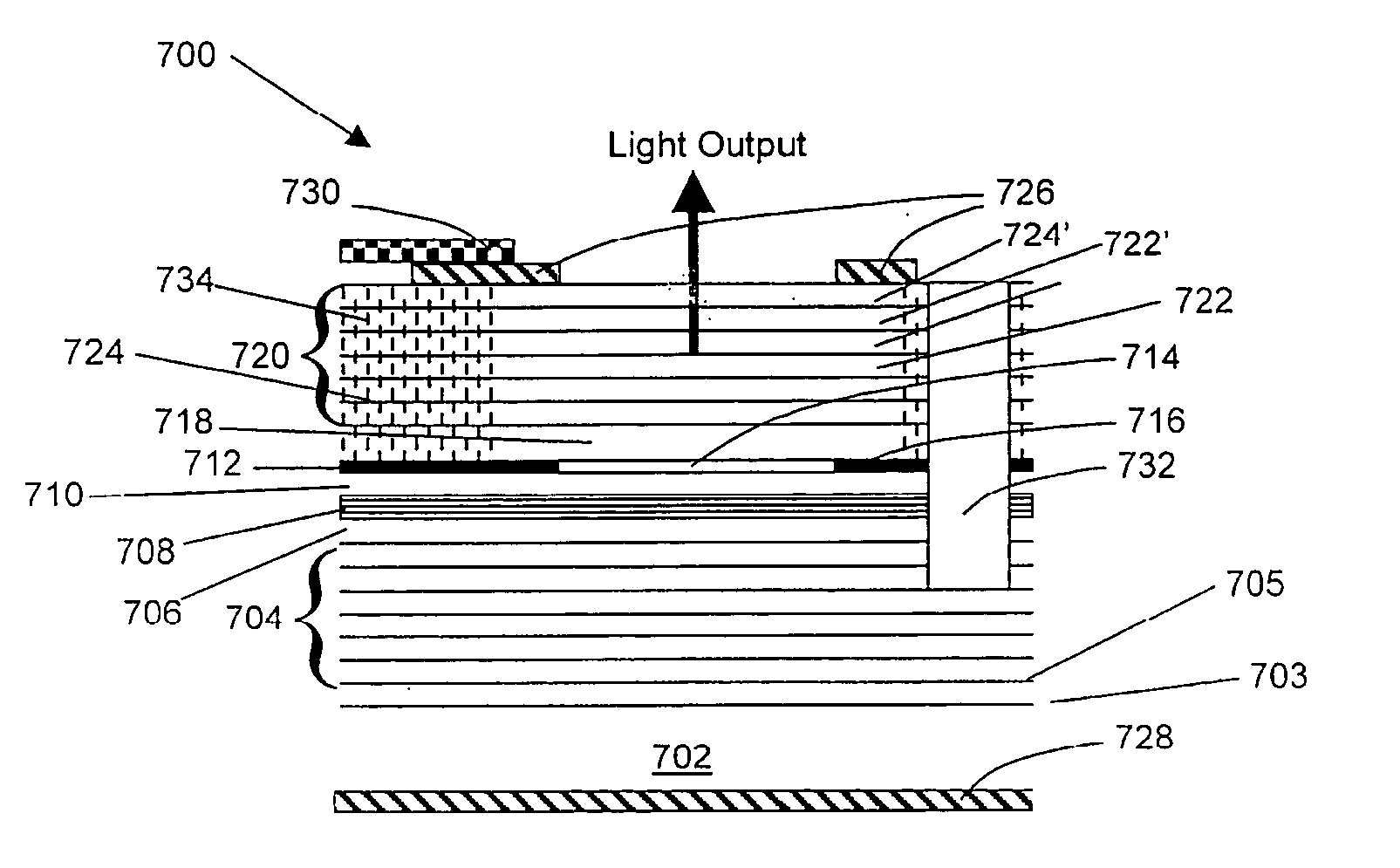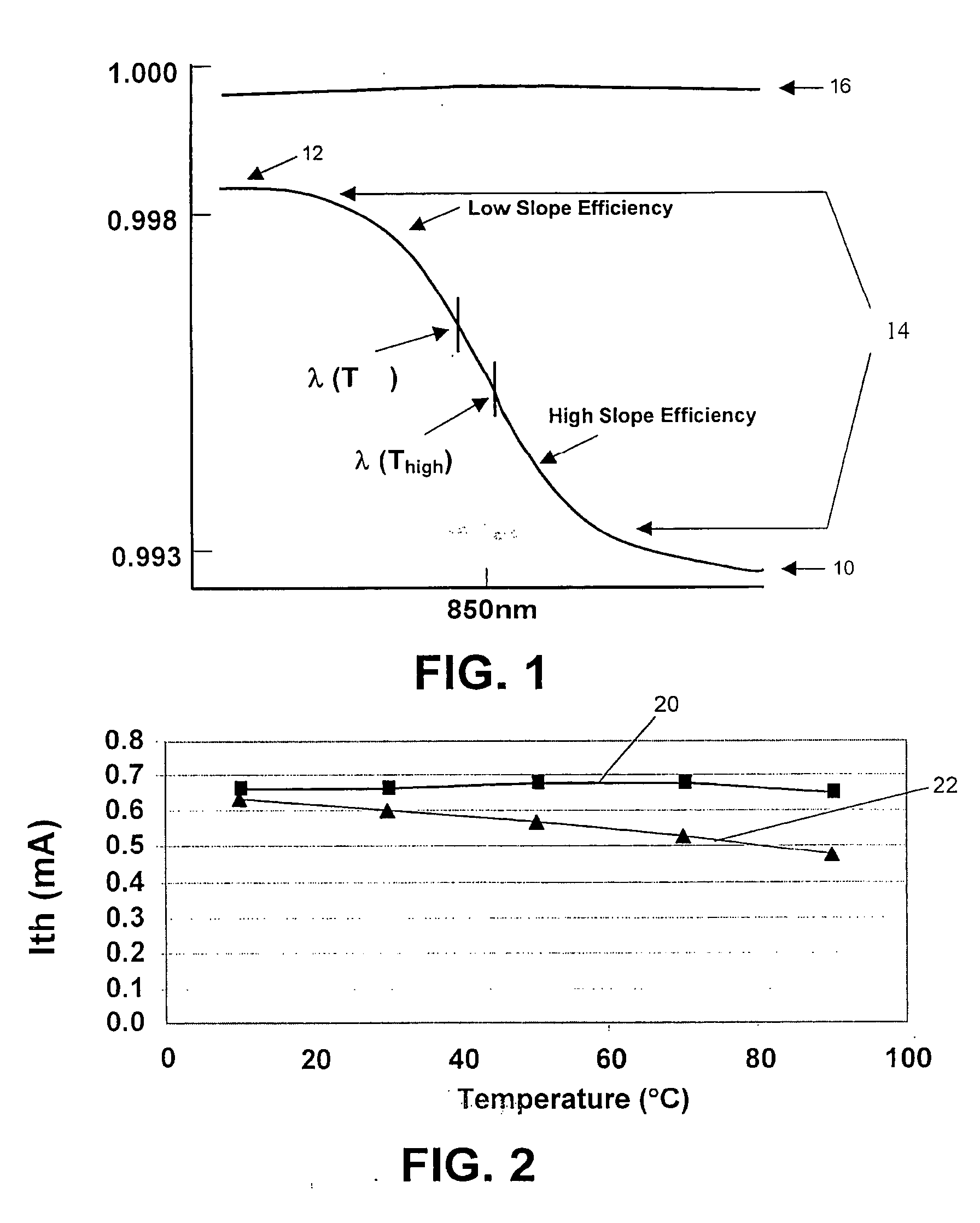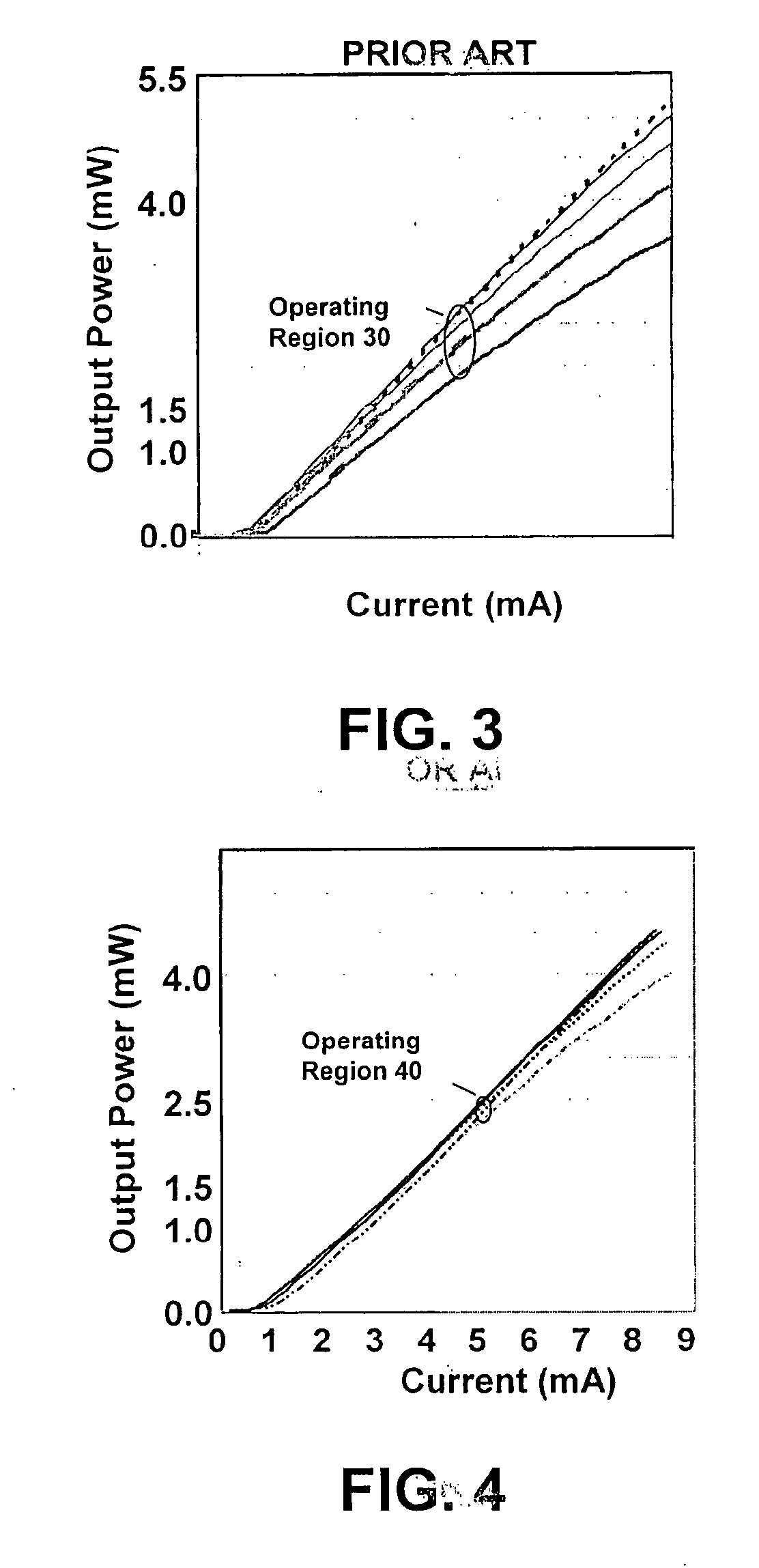Temperature compensated lasers
a laser and temperature compensation technology, applied in semiconductor lasers, laser cooling arrangements, laser details, etc., can solve the problems of reducing the decay of slope efficiency with temperature, using to its maximum practical limit, and not having an effective method of controlling temperature variation of slope efficiency d/d
- Summary
- Abstract
- Description
- Claims
- Application Information
AI Technical Summary
Benefits of technology
Problems solved by technology
Method used
Image
Examples
example 1
EXAMPLE 1
[0072] Experiments were conducted on experimental VCSELs. In experimental VCSELs, if the temperature was raised from 10° C. to 70° C., the slope efficiency at the higher temperature is less than 80% of the slope at the lower temperature. In a first experiment using a slight modification of the VCSEL top mirror as described above, the magnitude of dη / dT was experimentally reduced to less than ½; the slope efficiency at 70° C. was greater than 91% of the 10° C. value. Further reductions in dη / dT were made by making more changes to the top mirror.
[0073] The experimental reduction in dη / dT was achieved by using a top-emitting VCSEL whose top mirror reflectivity decreased with increasing wavelength, see FIGS. 1, 8 and 10A. Since the wavelength of a semiconductor laser increases with temperature, the increased wavelength resulted in a lower reflectivity of the mirror. The lower reflectivity produced a relative increase in η, which largely compensated for the quantum-mechanically...
PUM
 Login to View More
Login to View More Abstract
Description
Claims
Application Information
 Login to View More
Login to View More - R&D
- Intellectual Property
- Life Sciences
- Materials
- Tech Scout
- Unparalleled Data Quality
- Higher Quality Content
- 60% Fewer Hallucinations
Browse by: Latest US Patents, China's latest patents, Technical Efficacy Thesaurus, Application Domain, Technology Topic, Popular Technical Reports.
© 2025 PatSnap. All rights reserved.Legal|Privacy policy|Modern Slavery Act Transparency Statement|Sitemap|About US| Contact US: help@patsnap.com



